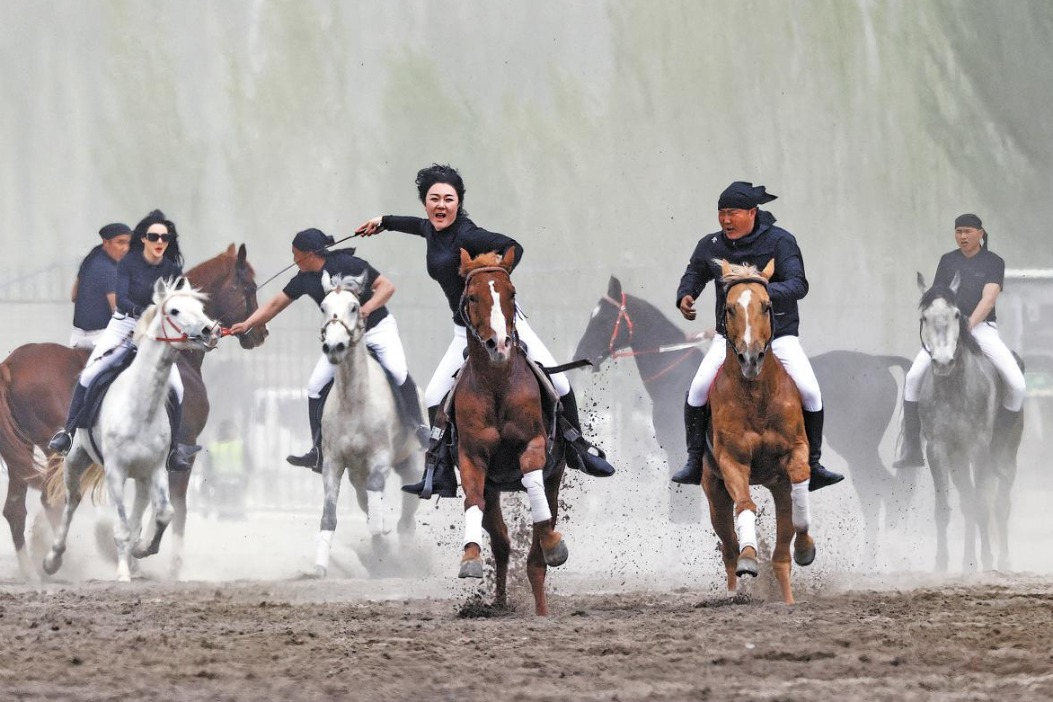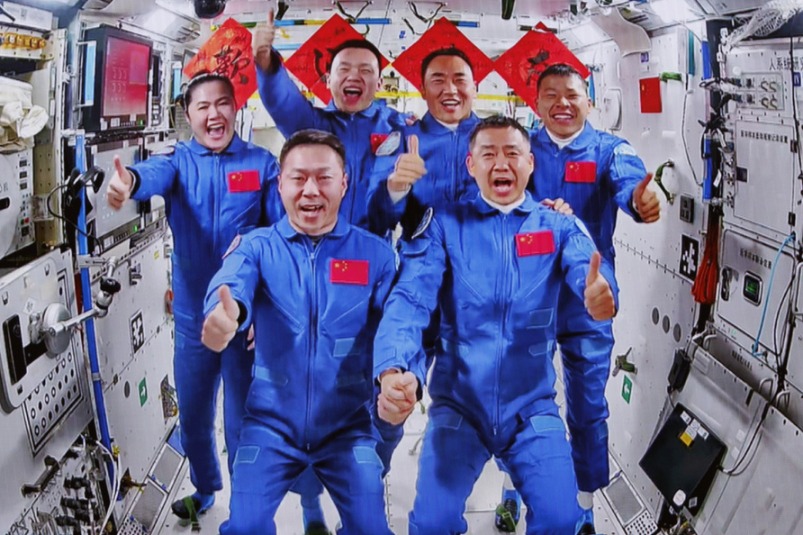China's Epic Journey from Poverty to Prosperity

The CPC has reviewed experience and summarized its findings. The CPC continuously expands its understanding of such questions as what constitutes a moderately prosperous society, and how we can achieve it. Through the resulting judgments-that neither poverty nor slow development is socialism, that achieving common prosperity is an essential requirement of socialism, and that the Party will promote well-rounded human development and common prosperity-it has gained a deeper understanding of the essence of socialism, and achieved a clearer picture of the goal of a moderately prosperous society. Meanwhile, its understanding of the attributes of a socialist society has expanded from "prosperous, strong and democratic", to also include "culturally advanced, and harmonious", and then "beautiful", providing a more comprehensive grasp of what is necessary to create a moderately prosperous society. It has shifted its focus from economic growth to economic development, from comprehensive, coordinated and sustainable development to innovative, coordinated, green, open and shared development, and from high-speed growth to high-quality development.
Over the years, the CPC has attached great importance to understanding and applying the basic principles of development, and has worked out a series of economic, political, cultural, social, and eco-environmental measures, which have led to greater progress in building a moderately prosperous society.
The CPC has expedited development by resolving problems and defusing risks. The CPC employs a problem-oriented approach-steadily moving China towards its goal of moderate prosperity by identifying and addressing problems one after another. The principal challenge facing the country at first was the gap between the low level of production and the growing material and cultural needs of the people; it is now the gap between unbalanced and inadequate development and the growing expectation of the people for a better life. To tackle these challenges, the CPC has formulated targeted policies and measures based on an accurate analysis of the nature of the principal problems at different stages of development.
Facing multiple conventional and unconventional risks and challenges, either predictable or unforeseen, from both within China and abroad, and from both human society and nature, the CPC has done what is required to ensure continuous and consistent development.
Since its 18th National Congress, the CPC has addressed itself to solving the problems that concern the people most and affect their vital interests. Special attention is being directed to removing obstacles hampering fairness, justice, and common prosperity.
The CPC has also worked to address shortcomings in achieving all-round moderate prosperity. A series of pioneering measures have been rolled out, such as preventing the disorderly expansion of capital, and ensuring fairness and justice in every judicial case. Determined that housing is for living in, not for speculation, the CPC has taken clear steps to keep the housing market under control. To ease the pressure on students, a "double reduction" policy has been implemented to reduce homework and after-school tutoring.
All these measures-focusing on high-quality growth and coordinating development and security-h(huán)ave guaranteed that the goal of building a moderately prosperous society in all respects has been realized on schedule, and laid a solid foundation for China's longer-term development.
3. Development Through Reform and Opening Up
Reform and opening up is essential for achieving moderate prosperity in all respects. It was a critical move in raising China to its current level, and will be a key step in realizing the Two Centenary Goals and national rejuvenation. Together, the CPC and the Chinese people have seized historic opportunities and properly managed enormous change. By staying committed to deeper reform and broader opening to the world, China has realized the greatest economic and social transformation in contemporary history.
Reform has created momentum for achieving moderate prosperity in all respects. Faced with new situations and problems, the CPC has succeeded in leading the Chinese people to free their minds, seek truth from facts, and advance with the times through reform and innovation, so as to remove the barriers that hinder development. The household contract responsibility system was introduced in rural areas, and special economic zones were set up. Shifting from a model of pure public ownership to a model where public ownership plays the dominant role while economic entities operate under diverse forms of ownership, China consolidated and developed the public sector of the economy, and encouraged, supported, and guided the non-public sector. The economic system has been reformed, evolving from a planned economy to a socialist market economy, so that the market can play a decisive role in resource allocation, while the government can better perform its roles. The focus has shifted from economic structural reform to comprehensive reform of the economic, political, cultural, social and eco-environmental systems, as well as strengthening governance of the Party.
Since the 18th National Congress of the CPC, China's reform has entered uncharted waters and faced new challenges. The CPC has shown great political courage, enacting more than 2,400 measures to remove deep-rooted obstacles, and promoting further reform in all respects in a swift yet steady manner. Breakthroughs and decisive results have been achieved in key areas. Some fields have even experienced a total and systemic restructuring. Through exploration by trial and error and top-level design, China stays focused on solving problems and achieving goals, and expands all-round reform on the back of successful pilot programs. Through this approach, the Party has been able to advance reform and development while maintaining stability, ensuring that building moderate prosperity in all respects has continued in an active manner.
Building a moderately prosperous society in all respects has progressed in parallel with China's interaction with the rest of the world. In the process, China has kept its doors wide open. China cannot develop in isolation from the rest of the world. The Chinese people have embraced the world with open arms, learned from the world, and integrated with the rest of the world. China has engaged in "welcoming in" and "going global" on a large scale. By making opening up a catalyst for reform, development and innovation, China has achieved a great transition from seclusion and semi-seclusion to comprehensive openness. In the new era, China is furthering its opening up on a larger scale, in more fields, and to a deeper level. It has opened its doors wider to the world through a series of measures, including high-quality cooperation under the Belt and Road Initiative, key platforms such as the China International Import Expo, pilot free trade zones, and optimizing the business environment. More foreign companies invest in China and start businesses here, with ever more of foreigners coming to China to study, work and travel. At the same time, more Chinese companies are investing abroad, and the number of Chinese people going abroad to study, work and travel is also on the increase.
Opening up has brought China capital, advanced technology, and management expertise. It has changed the mindset of the Chinese people, stimulated their creative enthusiasm, and contributed to the country's modernization. China's development has also brought benefits to the world: its opening up has created vast business possibilities for other countries; its outbound investment and cooperation has promoted local growth and employment; its active participation in the international division of labor has contributed to a more rational allocation of global resources; and its exports have satisfied the needs of the international market with their high quality. The Chinese people have made their mark, promoting exchanges and mutual learning all around the world.
- Travel agencies and tourism experts bullish on May Day holiday
- Hubei raises over $20m and mobilizes major hospitals to boost medical reform
- Govt announces new financial support for youth employment
- Hunan's mystical peaks draw nature-loving travelers
- Former commander-in-chief of rocket project pioneers new space odyssey
- China launches major translation projects in Dalian




































